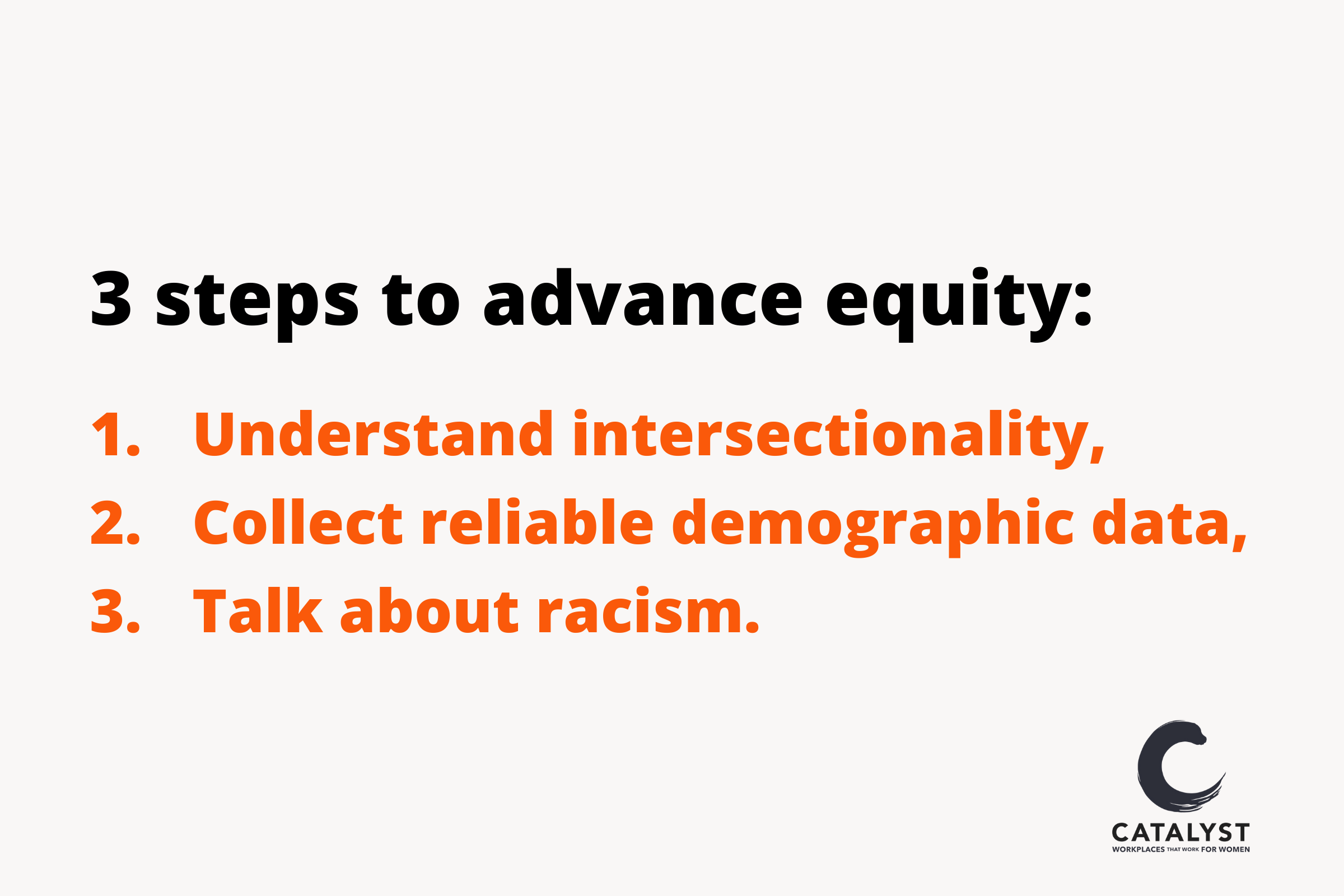Improving Racial and Gender Equity in Corporate Leadership
4 min read · July 19, 2022
Catalyst CEO Champions for Change
Summary
The Catalyst CEO Champions For Change group consists of more than 70 high-profile CEOs whose companies represent about 10 million employees and over $3 trillion in revenue globally. These leaders have boldly pledged to advance more women into senior leadership positions, particularly women of colour. The report highlights data on the progress towards racial and gender equity made by these companies in 2020, particularly in the representation of women who identify with underrepresented ethnic and racial groups across leadership pipelines in the countries in which they operate, as part of the pledge.
Key findings
In the United States (sample size = 60 companies), 13 percent of managers were women identifying with underrepresented ethnic and racial groups.
A smaller subset of about six companies provided workforce metrics for Canada, revealing that 13.4 percent of managers in these groups were women. Considering that women of color make up 20.3 percent of the general population in the United States and 11.5 percent of the general population in Canada, we see that, in these countries, Champion companies are building workforces that better reflect the ethnic and racial diversity of the overall population.
Takeaways
The report recommends a three-step plan to help organizations accelerate their journey toward greater equity:
First, get educated about intersectionality: Women identifying with underrepresented ethnic and racial groups face unique challenges that White women do not. They face discrimination on multiple fronts — based on their gender, race, and ethnicity — so companies must view all diversity and inclusion initiatives with an intersectional lens.
Second, organizations should establish a system to collect reliable data on race and ethnicity: Establishing a baseline of your organization's current racial and ethnic diversity, then assessing change over time, is a critical step toward positive progress.
Third, start a conversation about racism: To identify barriers and develop programs for positive change, organizations need to start the conversation about how racism shows up in the organization's practices and among its staff. It will be uncomfortable for some, but it is a necessary step toward progress.
Read the full report here.
References
Catalyst. (2021, October 21). Towards a more equitable future: The catalyst CEO champions for change (Report).

